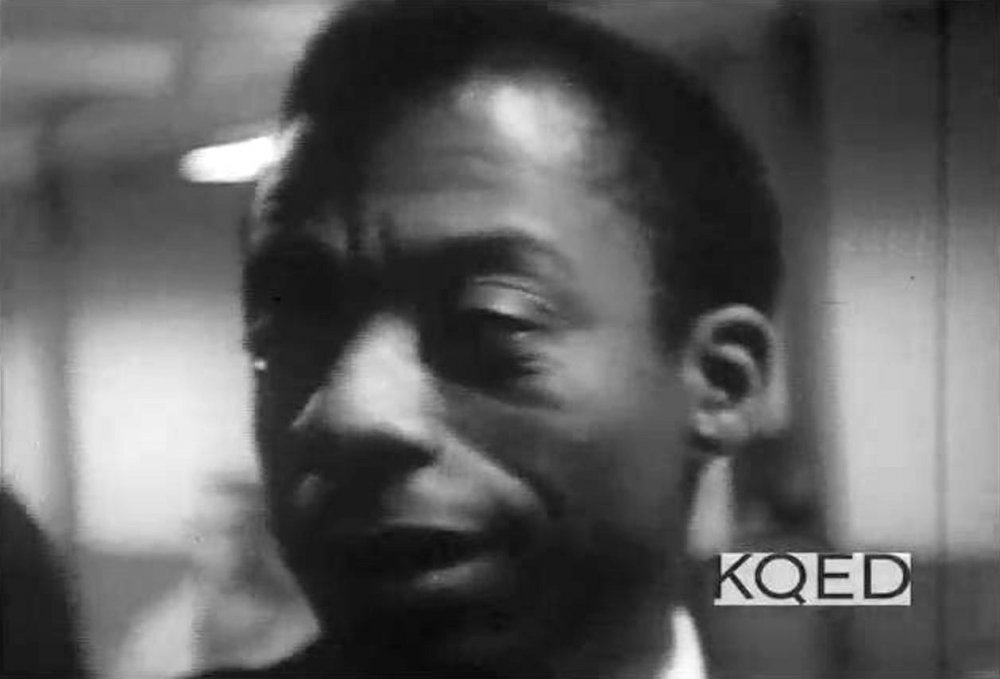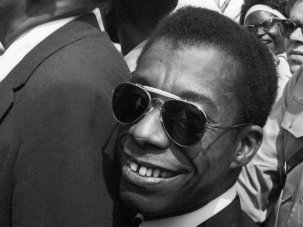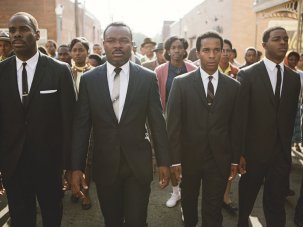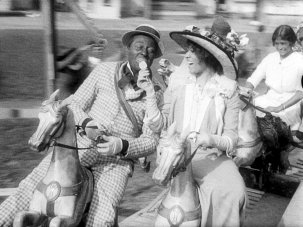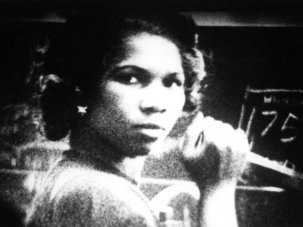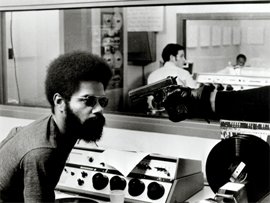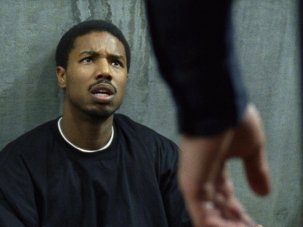“What do police do when they get mad? …Who do they take their steam off on?”
“I think you know the answer to that question.”
Filmed just over 50 years ago for National Educational Television, Take This Hammer – produced and directed by Albert Maysles acolyte and KQED co-founder Richard O. Moore – was intended to deflate the legend of a “cosmopolitan and forward-looking” San Francisco, which painted itself progressive by comparison with the South where simultaneously, in Alabama, the Birmingham campaign was in progress.
Take This Hammer (Director’s Cut) is hosted by the San Francisco Bay Area Television Archive.
It hoped to do so through the person and peripatetic narration of James Baldwin, Harlem-raised poet, playwright and stranger to the West Coast, who would interrogate the incongruity between the city’s self-image as bastion of equal opportunity and the dispossession of an urban youth pushed to its farthest corners.
“There is no moral distance,” Baldwin proposes, “which is to say no distance between the facts of life in San Francisco and the facts of life in Birmingham.” Nor does it seem any great stretch to adapt Baldwin’s statement thus: there is no moral distance between the facts of life in San Francisco in 1963 and the facts of life in Ferguson, Missouri in 2015.
In half a century, has the aspect of black American citizenship altered much at all? It’s a question that occurs again and again when watching the documentary in the context of Eric Garner’s fatal strangulation and Michael Brown’s fatal shooting at the hands of America’s police force in 2014 – just as there is one question that troubles Baldwin so intensely that he would ask it over and over throughout the film’s 59 minutes: how does one invest the black adolescent with a sense of his or her own worth when the country would do all in its power to deny his or her dignity, his or her belonging on a day-to-day basis? This is “the conundrum” the film – or Baldwin – seeks to confront and break down, but not solve, because as Baldwin owns, “I don’t know what I could say which would make any sense to them, because in fact it does not make any sense.”
Take This Hammer can be divided into roughly three sets of 16mm footage, two of which depend on Baldwin’s spoken word.
Of these two, there is first that taken from a customised Corvair station wagon – ambitiously named the ‘KQED mobile film unit’ – which, with hood removed, accommodated a “small” cameraman upfront and another in the back, stowed between batteries and a reel-to-reel sound recorder. This setup enabled filmmakers to shoot Baldwin and his guide Orville Luster, executive director of San Francisco’s Youth for Service organisation, both face-forward through the windshield and over-the-shoulder from the rear.
Fixed-camera footage – a medium shot of Baldwin, filmed at Moore’s home – comprises a second set, thus staggering the poet’s extemporised commentary, taking for stimulus the municipal buildings and shopfronts of the black neighbourhoods of Bayview and Western Addition, and a more measured monologue – words weighed in the bath with a bottle of Johnny Walker Black Label, says Moore – in which Baldwin attempts to touch at the root of America’s inveterate racism.
The third and only set Baldwin believed to be of any value was shot on handheld camera amid a group of young black men. At Baldwin and Luster’s solicitation, the men share their experiences of being always out of work, of the tokenism of employers, the cyclical ghettoisation-and-displacement of black communities under the banner of ‘redevelopment’, of attack dogs and arbitrary detainment by San Francisco police. Debating the direction of the Civil Rights movement, most of the assembled concur that it would be much accelerated under the aegis of Malcolm X, and will falter so long as the “chump” Mr King is in charge. As one man puts it, “I think a truce down there [in Birmingham] is impossible. It’s utterly impossible. It’s fantastic and it’s unbelievable.” [Ava DuVernay’s new drama of the King-led marches, Selma, advances the opposite perspective – that X’s leadership would have provided the forces of repression with their desired rationale for violent crackdown.]
Unsurprisingly, when Moore presented his canned first cut to the KQED board of directors, it was these scenes that caused consternation. According to the archive blurb, one board member said the following: “I believe we would all agree that it is not the function of KQED to produce inflammatory, distorted, sacrilegious, extremist programming under the name of educational television. I believe this programme is all of these.”
In the history of KQED’s output thereto, no other film had met with resistance. The board’s refusal to broadcast the film in its original form Moore felt to be “a violation of the first amendment,” and in rejoinder to their characterising these scenes as controversial, had this to say: “Controversial for whom? They weren’t controversial for us because they were happening in front of our cameras. They were real; they were immediate.”
The proposed resizing of the film excised a full 15 minutes, axing those sections in which adolescents spoke frankly and censoriously of the systemic abuses of the city’s white leaders. Moore, in the end, surrendered to what he has since called a “very painful compromise”, one that – at 94 – he regrets as a personal failing. (The edited version of the film was the only version in existence until, at Moore’s prompting, the lengthier, original cut was unearthed in 2013.)
Baldwin, whom it seems had only ever conceived of the film as a vehicle for the voices of black San Francisco, decried the too-heavy weight placed on his own vernacular, his last word. He and Moore never spoke again.
There are two sides to every story – but as Baldwin died in 1987, we have only Moore’s half of hindsight to try to understand why the pair parted ways on poor terms; a hindsight that has been helpfully preserved in a making-of documentary that accompanied the 2013 exhibition of the restored film, and which the San Francisco Bay Area Television Archive has made accessible online. What appears to be the case is that for Moore – whatever subsequent anguish he wears in the making-of doc – Take This Hammer was a professional project, for Baldwin a profoundly personal one, and a part of himself, necessarily.
From Moore’s point of view, the success of the film was predicated on Baldwin’s involvement: the idea for the film was conceived upon hearing that Baldwin was to visit San Francisco. Moore was a writer himself and Baldwin’s essay The Fire Next Time, just published in the New Yorker, had been much on his mind. But Moore was foremost a filmmaker, and taking a filmmaker’s perspective one can see why he wished to feature Baldwin’s monologue. Baldwin, perhaps uniquely, orated as powerfully as he wrote, and it must have excited the enraptured Moore to have captured this rhetoric on tape – and in particular Baldwin’s talent for the imbricative build that yields, here, to a clarion and iconic final analysis: “You’re the Nigger, baby; it isn’t me.”
By the same token, the footage inside the Corvair has its uses, streamlining the film, and imparting a sort of processual rhythm. There is something (at the very least) emblematic in the lateral, stop-start motion of the car that enacts the crosswise, methodical progress of the Civil Rights movement at large.
And yet, Baldwin’s position was the more pressing of the two; and the arrow-shower that rained on Selma in the weeks after its US release sheds light on why this might be; why Baldwin balked at the coerced role of conversationalist billeted to him in the editing.
Criticisms of Selma declaring the director’s distortion of historical fact effortfully circle and re-circle her depiction of the film’s Caucasian characters; supporting characters in this partial picture, partial as any standard-length feature must be. In doing so, they miss the point; fuss at the margins of the film. Their authors would sooner look at what is white space, the page borders, the interstices, before read – really read – black print.
Was it mindfulness of the precedent of white spin on black truth and the perversion therein that made Baldwin anxious not to be a part of the problem? Not to be among those who have shrouded or screened black interiority with verbosity; not to be an intermediary where none is needed?
The young black voices of Take This Hammer need no paraphrasing. Baldwin saw this, if Moore did not – at the time. Why extrapolate if they express themselves persuasively? Why annex their impassioned debate? Did Baldwin see, in Moore’s preferment of his voice, something akin to appropriation, white proprietorship, another tool of oppression in the Man’s ordnance?
Is it possible that Baldwin’s abjuring the project had also to do with his vocation? Around 45 minutes into the film, driving toward Ellis Street in the Lower Fillmore District, Luster points out San Francisco’s solitary “Negro hotel”, the Booker T. Washington. “This is a street that all Negroes are born on,” Baldwin meditates, “all Negroes have to survive: Booker T. Washington, the Baptist Church and the mosque. There’s really a great thing to be summed up in that – if one could.” Did Baldwin recognise the cogitative impulse to “sum up” or elaborate what is already in evidence as a writer’s reflex, not a universal one, and one that presupposes ego? Is it conceivable that Baldwin diagnosed this e pluribus unum hubris as his own personal failing, pertaining to the fate of the film? Baldwin wanted plurality, the chorus of teenage voices; what he got and we hear is his descant.
According to Moore, Take This Hammer elicited “no significant response”. Newscasts of the Birmingham Children’s Crusade and Bloody Sunday – vivid images of violence toward vulnerable women and children – roused consciences across America. Images packaged and sanitised, overawed by the language of reportage, parlayed by white, miced correspondents at the scene. A more analytical and discursive programme like Take This Hammer made no inroads whatsoever.
Take This Hammer is all talk. It is black men talking – and in the 1960s black men talking when not immediately, perceptibly at risk of physical injury, and whose speeches have not the composure or semantic detachment of pastor King’s allegorical oratory, offered no savour for the white, indicted audience. I’d go further to suggest that what panicked the KQED board more than anything else in the film is the defiant, insurrectionist laughter that animates these men and buttons down the blame. This was more exposure than it could bring itself to accept.
Then as now, television – by its underrepresentation of black culture; its expression of an American ethnicity of which the black experience is not commonly a part – is a kind of slow-acting poison, a drip-feed of disdain that mortifies by omission. As Baldwin states in Take This Hammer, the less defenceless black teenager “would have to be a little sardonic […] about the things he sees on television, what the president says and all those movies about being a good American”. The more susceptible adolescent “simply feels like blowing it up”.
What makes Take This Hammer such compulsive viewing today is that Baldwin, like his young interlocutors, shows no temperance. At a time when public-figure people of colour are under pressure to tow a moderate line, it is refreshing to find a film that does not reassure nor sweeten its political statements for white consumption. It is an irony not unexpected that we have it only now, in its entirety, 50 years after it was meant for exhibition.
Baldwin’s comprehension of America’s racism as deeply embedded is potent – pictographic and personal in a way we are no longer accustomed to hearing. Were America a lagoon, the clear-water paradise it is wont to self-imagine, its racism is the water-rot and sulphide stink of mangrove roots beneath the surface, thick as men’s arms, linked. This is Baldwin’s America, the America of Take This Hammer, and – to much the same degree – America today.
How was it that Baldwin could speak his mind? Because he feared no repercussion, or because the race conversation was better lubricated, unbroken, in 63? Now America would deny black-white disparity. It has come so far, it says. And as Baldwin says, voicing the white plaintiff: we freed the black man from “the elephant-ridden jungles of Africa”, liberated him from the bonds of slavery. Now, instead: we have given you the right to vote; we tolerate mixedness as we did not do; we, as a country, elected a black president, who serves his second term.
And as we have come to discover, the appointment of an African-American president, an eventuality Baldwin believed in and postulates in this film, is – like television – not unequivocally effective, not black-and-white in its worth. There is still so much farther to go. And it stinks, baby, it stinks.
-
Sight & Sound: the March 2015 issue
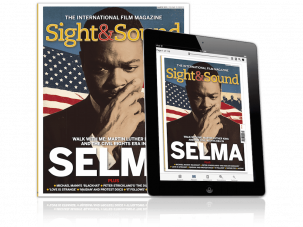
Selma and the art of protest, from Alabama in 1965 to modern-day Kiev and Cairo. Plus the whims and wiles of Eros in It Follows, The Duke of...
-
The Digital Edition and Archive quick link
Log in here to your digital edition and archive subscription, take a look at the packages on offer and buy a subscription.




